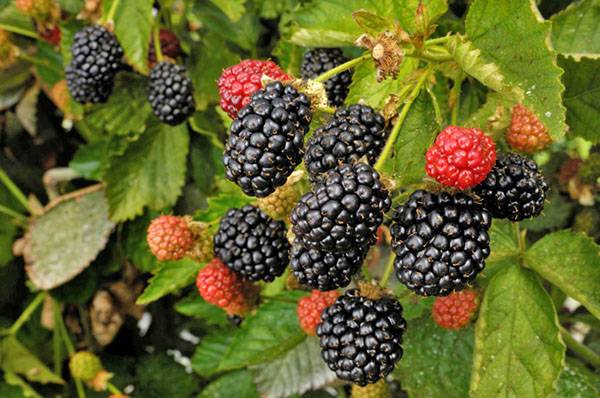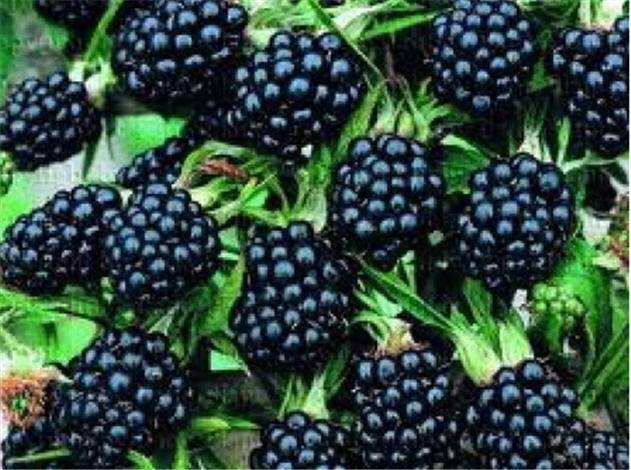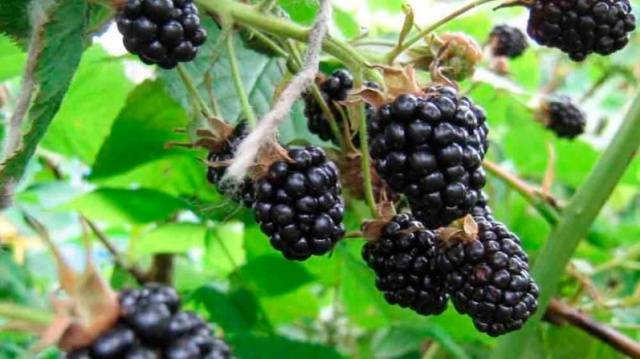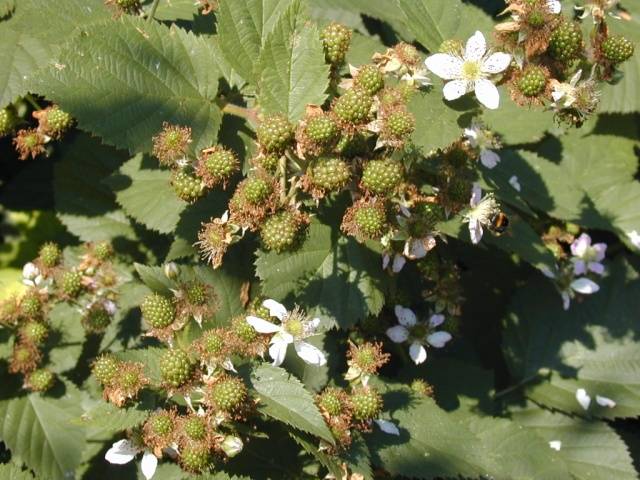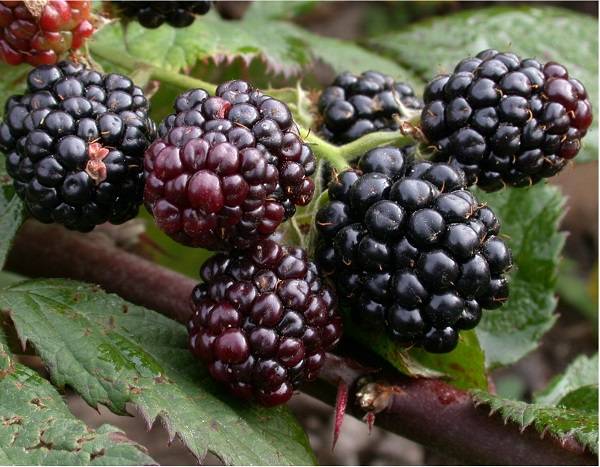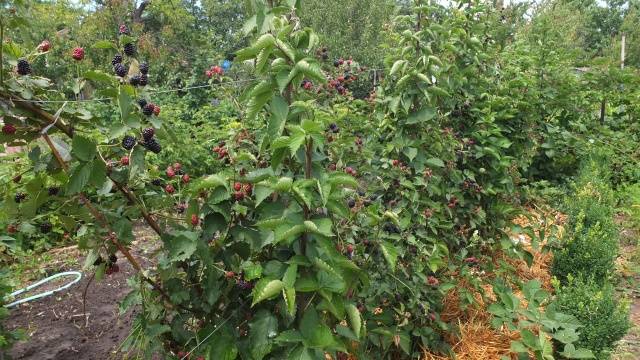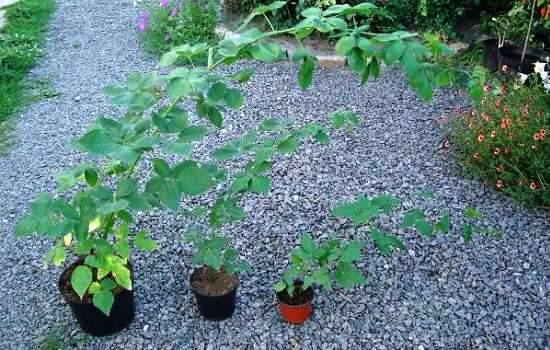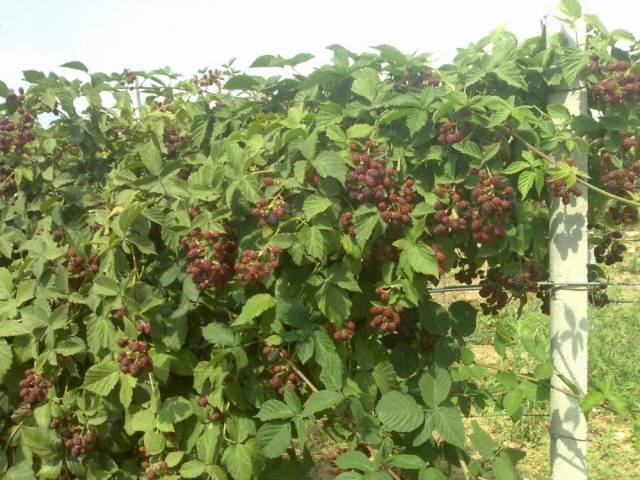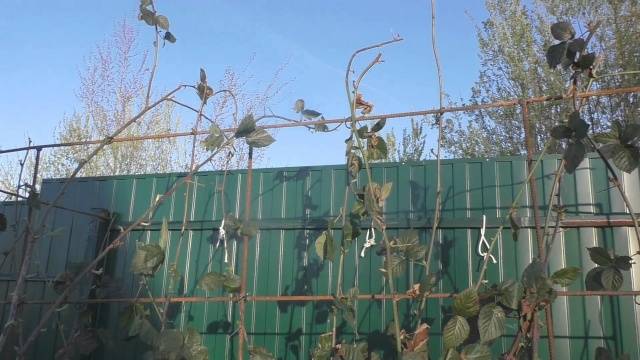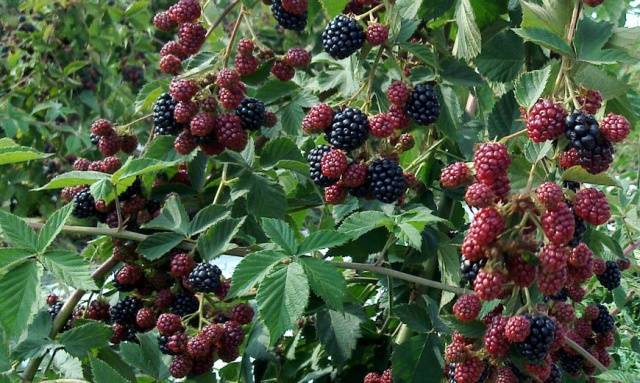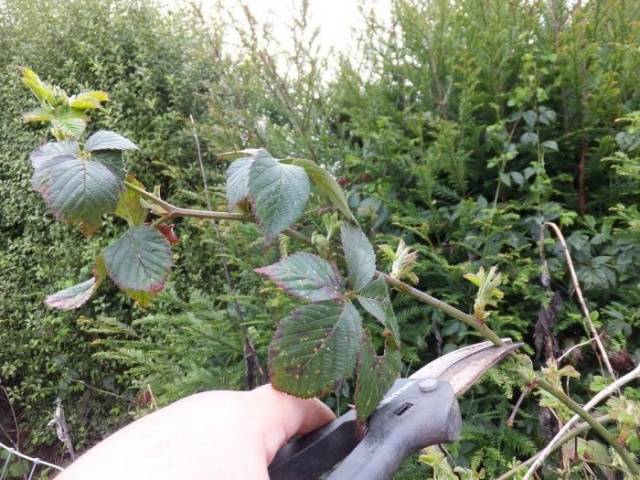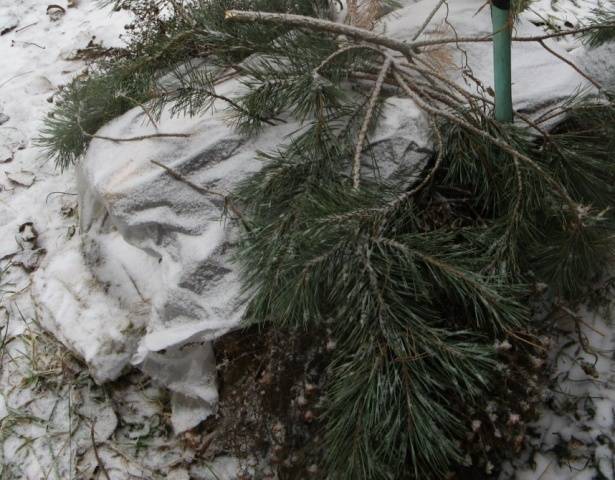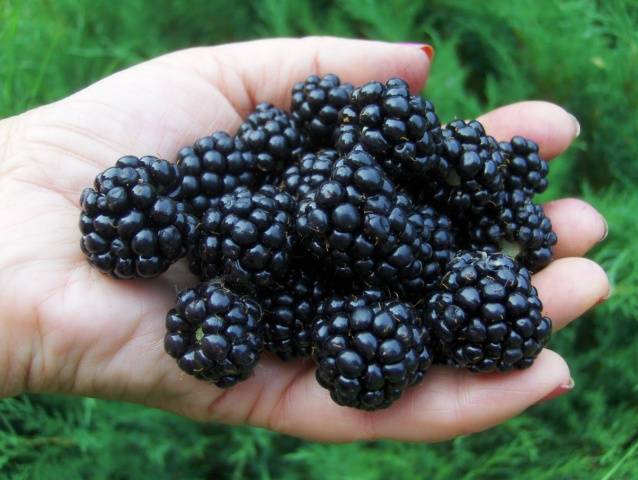Content
Thornless blackberry especially popular both in private gardens and on industrial plantations. The first thornless variety that came to Russia and neighboring countries was Thonfree. It is noteworthy that the name from English is translated as "free from thorns." This blackberry was a sensation at one time, it was considered the most fruitful and very tasty. Many new varieties have now emerged that surpass Thornfrey in every way except fertility. But this blackberry remains in demand and is one of the most common in personal plots.
Breeding history
Blackberry without thorns Thonfree (Thonfree) appeared in 1966 thanks to the American breeder D. Scott. It belongs to the Maryland varieties that are widely known throughout the world. The Thornfrey hybrid blackberry originates from the varieties Bryned, Merton Thornles and Eldorado.
In 2006, Thonfree was included in the State Register of the Russian Federation and recommended for cultivation in all regions.
Now the Thornfrey blackberry is used in the creation of new varieties as a donor of thornlessness and yield. In particular, she acted as one of the parent crops for the American Black Satin and Serbian Chachanska Bestrna.
Description of berry culture
From its inception to the present day, Thonfree blackberries remain one of the most common commercial varieties.
General understanding of the variety
Blackberry Thornfrey belongs to varieties with semi-creeping shoots. First, they grow upward, like kumanika, and then they become like flogs of dews, passing into a horizontal position.
The Thornfrey variety forms a low, powerful bush with thick, round in cross-section shoots, which can be faceted at the base and reach a diameter of 3 cm or more. The thorns are absent along the entire length. Young shoots are green, annual shoots are purple-cherry. Without pinching the top, their length can reach 5-6 m. The ability to form new shoots is weak.
The leaves are large, on one Thornfrey blackberry plant, they can have 3 or 5 corrugated segments of a dark green color. The branches on which fruiting occurs are heavily pubescent.
The root system is powerful, no shoots are formed. The flowers are pink, up to 3.5 cm in diameter.
Berries
The berries of the Thonfree blackberry are black, glossy to full ripeness, large, with an average weight of 4.5-5 g. They are about the same size, slightly pubescent, rounded-oval, firmly attached to a short stalk. Drupes are large. The berries are collected in large clusters, 20-30 pcs. in each.
The taste of the fruit changes as it ripens. At first they are sour, at the stage of technical ripeness they acquire sweetness and remain firm. When fully ripe, the taste improves, a faint aroma appears, but the berry becomes soft and literally creeps in the hands.
The tasting score indicated in the State Register is 4 points. Thornfree blackberry taste ratings, compiled by domestic gardeners, give the variety a little more than three points.
Characteristic
The characteristics of the Thornfrey variety are mixed. At one time, this cultivar was one of the best. Until now, the variety occupies huge areas in commercial plantings and grows in many dachas and household plots. But whether he can compete with another, new blackberry when laying a young garden, everyone decides for himself.
Main advantages
Winter hardiness of the Thornfrey blackberry thornless blackberry is average, although higher than that of the Black Satin variety. Without shelter, it will freeze every year in all regions.
The drought resistance of the Thonfree variety is considered high, but only against the general background. Blackberry culture is moisture-loving and needs regular watering.
It makes moderate demands on soils, but grows poorly on sandstones. With timely pruning and tying on a trellis, it is not difficult to care for the Thornfrey variety. It is most difficult to cover it for the winter because of the thick, stiff shoots on which fruiting next year will take place.
Scourges of this variety are absolutely thornless. Berries at the stage of technical maturity are transported well, at full ripeness they become so soft that it becomes impossible to transport them.
Flowering period and ripening time
The pink flowers of the Thornfrey blackberry in Central Russia open in the second half of June. Fruiting later, stretched out for a month and a half, depending on the region and weather factors, begins at the end of August or September.
In areas with a short summer, the berries do not have time to fully ripen.
Yield indicators, fruiting dates
For a long time, the Thornfrey variety was considered the most productive. It annually produces up to 20 kg of berries from an adult bush or 77.8 centners / ha on average. This blackberry belongs to late varieties... The term of its fruiting depends on the region of cultivation, weather factors and agricultural technology. In different areas, picking of Thornfree blackberries can begin both in late August and late September.
Now new cultivars have appeared, for example, Black Satin is more productive, but less tasty. When comparing blackberry varieties Thornfrey and Chachanska Bestna, not only a high yield, but also high tasting properties of the latter are noted.
Scope of berries
The Thornfree Blackberry was developed as an industrial variety. Most of it goes for processing. Part of the berries at the stage of technical ripeness goes to retail chains. While it is difficult for them to compete with the sweet, aromatic fruits of modern varieties, the Thornfree blackberry has its own admirers.
Disease and pest resistance
Thonfree blackberries are resistant to disease and pests. If the berries are overripe, they may develop gray rot.
Advantages and disadvantages
When considering the strengths and weaknesses of the Thornfree blackberry, it should not be forgotten that it was created as an industrial variety. Its advantages include:
- High productivity.
- Complete absence of thorns.
- Large berries.
- High resistance to heat and drought (compared to other blackberry varieties).
- The bush does not produce overgrowth.
- High resistance to pests and diseases.
- Good transportability of Thonfree blackberries at the stage of technical ripeness.
Disadvantages of the variety:
- Average frost resistance.
- Shoots do not bend well, it is difficult to tie them up and cover them for the winter.
- Fruit taste mediocre.
- Late ripening of berries - part of the harvest is lost, especially in the northern regions.
- Overripe fruits cannot be transported.
- If the crop is not harvested on time, gray rot can attack the berries.
Reproduction methods
Blackberry variety Thonfree is easily propagated by green and root cuttings, layering, pulping (rooting of the tops). An adult shrub can be divided.
Landing rules
Planting blackberries will not present any difficulties even for novice gardeners. Moreover, the Thornfrey variety is devoid of thorns and cannot injure hands.
Recommended timing
In the north, blackberries are planted only in spring, so that the bush has time to adapt and take root before the onset of frost. In the south - only in autumn, otherwise the sudden heat will destroy the young plant. In other regions, spring planting is recommended, but it can be postponed to early autumn if the weather is usually warm at this time, and at least a month is left before frost.
Choosing the right place
Thonfree blackberries prefer light, slightly acidic loams. The bush must be protected from cold winds. In the south, blackberries can be in partial shade for part of the day, this will protect the berries from the heat. In temperate climates and in the north, you will have to choose the sunniest place - the Thornfrey late variety, the fruits need a lot of light and heat to ripen.
Soil preparation
You should not especially worry about the composition of the soil for planting blackberries. It is not difficult to prepare a suitable soil on your own: the top fertile layer removed when digging the planting hole is mixed, humus and starting fertilizers are added (120-150 g of phosphorus, 50 g of potassium). If the soil is too acidic, lime must be added. With an alkaline or neutral reaction, red (high-moor) peat is added. More organic matter is added on sandstones, sand is added to heavy loams.
A planting hole is dug with a diameter and depth of 50 cm.
Selection and preparation of seedlings
Thonfree blackberry has been grown for a long time in Russia and neighboring countries. There are no problems with planting material, it is unlikely that you will be deceived with the variety. But the quality of the blackberry is of great importance.
Make sure that the root system is well developed and not damaged. You can smell it, the smell should be fresh. Good shoots are elastic, young ones are green, annual ones with a cherry tint. The bark should be smooth, the wood underneath should be greenish-white.
The pre-planting preparation of seedlings consists in soaking the root system for about 12 hours or watering a container plant.
Algorithm and scheme of landing
Thornfrey blackberry seedlings are placed at a standard planting at a distance of 1.5-2.0 m from each other, 2.5-3.0 m in row spacings. On industrial plantations, the bushes are compacted. If there is a lot of space in the garden, the distance between the seedlings can be increased - this makes it easier to care for the blackberries.
Landing is carried out in the following sequence:
- The pit is filled by 2/3 with a nutrient mixture, filled with water, allowed to settle for 10-14 days.
- A blackberry seedling is placed in the center on a mound formed in advance, the roots are straightened, and covered with soil. The root collar should be covered by 1.5-2.0 cm.
- The soil is compacted, the blackberries are watered abundantly.
- Pour in a thick layer of mulch.
Follow-up care of the culture
The first time after planting, Thonfree blackberries need to be watered twice a week, spending at least 5 liters per plant.
Growing principles
Blackberry variety Thornfree must be tied up and shaped by pruning. Its shoots, thick and long, first grow upward, then horizontally. Under the weight of multi-berry heavy brushes, they sink to the ground. If you do not tie them to a multi-row or T-shaped trellis, most of the crop will end up on the ground. In addition, there is little sunlight below, which will prevent the berries from ripening.
Sometimes the shoots of the current season of the Thornfrey blackberry are not tied up at all, but laid on the ground and fixed. In winter, they are simply covered, and in the spring they are put in order and raised on a support.
All this affects the yield. Timely feeding, timely shelter for the winter will improve fruiting.
Necessary activities
The blackberry culture is hygrophilous, although the Thonfree variety is characterized as resistant to drought, in hot weather the bushes are watered once a week. Loosening is carried out after the shoots are tied to the trellis and before the shelter for the winter. The rest of the time, the trunk circle is mulched.
They say that the Thornfrey blackberry bears fruit well without top dressing, but excellent with top dressing. But every gardener wants to get the most out of every plant he grows. The Thornfrey variety bears fruit abundantly, so that it actually gives a lot of berries, it needs to be actively fed:
- In the spring, immediately after removing the shelter, the blackberry is fertilized with nitrogen.
- At the beginning of flowering, they give a complete mineral complex that does not contain chlorine.
- After the start of the formation of berries until August, the bushes are poured with a solution of mullein infusion (1:10) or green fertilizer (1: 4) with the addition of a liter can of ash to a bucket of liquid.
- In August and September, phosphorus-potassium fertilizer is given twice.
Blackberry reacts very well to foliar feeding, which should be done no more than 1 time in 14 days. If you add a chelate complex to the balloon, the quality of the crop will increase, and the plant will not get chlorosis.
Shrub pruning
Old, fruiting blackberry shoots are cut into a ring. They will no longer give a crop, and next season they will dry out on their own. If the old lashes are left, they will simply take away water and nutrients from the productive shoots and thicken the bush.
Blackberry care Thornfree includes pruning in the spring. Of the well-wintered shoots, 5-6 of the strongest are left. The formation and garter of the bush is difficult due to the thick, poorly bending branches, pruning is carried out in different ways.
- You can pinch a young shoot at the stage of the beginning of growth when it reaches 20-30 cm. It will give several lateral branches, which will be much thinner than the main lash. It is much easier to deal with such branches (lift and remove from the support, lay for the winter), they bend more easily.
- The shoots are allowed to reach the desired length, then the top is cut off. All lateral branches are pinched when they reach 40 cm.
- Only strongly regrown vines are shortened.
Preparing for winter
In the fall, just before the onset of frost, the blackberries are removed from the trellis and covered for the winter. By this time, the sprouted shoots should already be removed. It is easiest to bend and cover the stubborn lashes of Thornfrey blackberries if they were cut using the first method described. Thin shoots are just easier to bend.
Spruce branches, straw, spunbond, agrofibre, dry soil are used as a covering material. Polyethylene does not allow air to pass through, the blackberries under it can vanish, which is even worse than freezing.
Diseases and pests: methods of control and prevention
Blackberry Thornfrey rarely get sick, only gray rot can hit overripe berries that are not harvested in time. Pests do not annoy this variety either. But if you don't feed the plant, it will weaken and become vulnerable. In order to avoid trouble, it is impossible to plant next to crops that can "share" diseases with blackberries - raspberries, strawberries, nightshade crops.
Prevention should still be carried out - after removing the shelter and before preparing the culture for winter, the shoots are treated with preparations containing copper. During foliar dressing, it is good to add an ampoule of epin or zircon to the fertilizer bottle.
Conclusion
Despite the fact that recently there have been many new varieties with a delicious taste, Thornfree blackberries still remain in demand. It is easy to buy it in domestic nurseries. The high yield and the absence of thorns can be attributed to the undoubted advantages of the variety.
